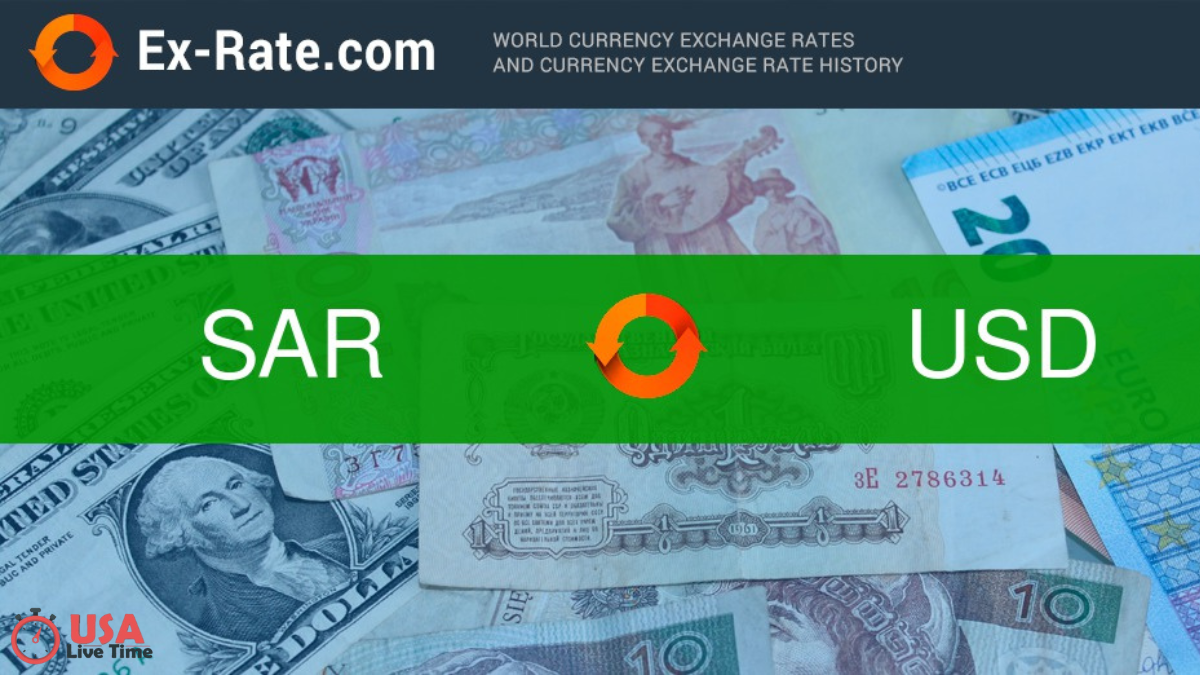Table of Contents
The world of currency exchange is vast and constantly evolving, with various factors influencing the rates at which different currencies trade against each other. One such currency pairing that has garnered significant attention is the Saudi Riyal (SAR) to the United States Dollar (USD). This relationship plays a crucial role in global trade, particularly within the Middle East, given Saudi Arabia’s prominent position in the oil industry. Understanding how the SAR to USD exchange rate operates can help businesses, travelers, investors, and even casual observers stay informed about global economic trends.
In this article, we will explore the SAR to USD exchange rate, its historical context, the factors that influence its fluctuations, and practical insights into how individuals and businesses can navigate this exchange. With an emphasis on clarity and expertise, we’ll provide a comprehensive look at this important currency pair.
What is the SAR to USD Exchange Rate?
The SAR to USD exchange rate refers to the value of one Saudi Riyal in terms of the US Dollar. In simple terms, it tells you how much one SAR is worth when converted into USD. This exchange rate is not only significant for travelers who are visiting Saudi Arabia or the United States but also for businesses that engage in international trade, as well as investors who need to understand the flow of capital across borders.
The Saudi Riyal, the official currency of Saudi Arabia, is pegged to the US Dollar. This means that the value of the SAR is directly tied to the value of the USD, and the exchange rate remains relatively stable over time. The peg is set at 1 USD = 3.75 SAR, which has been the official rate since 1986. This fixed exchange rate system helps maintain economic stability within Saudi Arabia and reduces the risk of currency fluctuations that could adversely affect businesses and investors.
Historical Context of the SAR to USD Exchange Rate
To understand the current SAR to USD exchange rate, it’s essential to take a look at the historical context. The Saudi government has maintained a fixed exchange rate between the Riyal and the Dollar for several decades. This fixed peg was introduced in 1986 and has remained stable ever since, with the SAR being pegged to the USD at the rate of 1 USD = 3.75 SAR.
The decision to peg the SAR to the USD was primarily driven by Saudi Arabia’s dependence on oil exports, with oil being priced in USD on the global market. By pegging the SAR to the Dollar, Saudi Arabia was able to ensure stability in its economy and maintain predictable prices for its oil exports. This move also helped protect the value of the Saudi Riyal against the volatile fluctuations of other currencies.
Over the years, this peg has provided economic stability, but it has also been a subject of debate, particularly during periods of fluctuations in the US Dollar. Critics argue that the fixed exchange rate can limit Saudi Arabia’s ability to respond to changes in global markets, particularly when the US Dollar strengthens or weakens. Despite these concerns, the peg has remained in place for over three decades, and it continues to be a cornerstone of Saudi economic policy.
Factors Influencing the SAR to USD Exchange Rate
While the SAR to USD exchange rate is technically fixed, several external factors influence the value of the Saudi Riyal against the US Dollar. These factors play a crucial role in shaping the economic environment and determining whether the peg remains sustainable.
Global Oil Prices
Saudi Arabia is one of the largest oil exporters in the world, and its economy is heavily reliant on oil revenue. The price of oil on the global market is denominated in USD, which means that fluctuations in oil prices can have a significant impact on the SAR to USD exchange rate. When oil prices rise, Saudi Arabia’s revenue increases, which bolsters the value of the SAR. Conversely, when oil prices fall, the country’s revenue decreases, putting pressure on the exchange rate.
US Federal Reserve Policies
The policies of the US Federal Reserve (Fed) also play a significant role in shaping the SAR to USD exchange rate. As the US Dollar is the dominant global reserve currency, changes in US interest rates and monetary policy can influence the value of the Dollar and, consequently, the SAR. When the Fed raises interest rates, the value of the USD tends to strengthen, which can have an indirect effect on the Saudi Riyal, despite the peg. Conversely, when the Fed lowers interest rates, the USD weakens, which can impact the stability of the SAR.
Inflation and Economic Growth
Inflation and economic growth in both Saudi Arabia and the United States can also influence the SAR to USD exchange rate. For example, if inflation rises significantly in the US, the value of the Dollar may decline, impacting the exchange rate with the SAR. Similarly, if Saudi Arabia experiences high inflation, it could lead to a depreciation of the Riyal, even within the context of the fixed exchange rate.
Geopolitical Events and Market Sentiment
Geopolitical events, such as conflicts in the Middle East or changes in Saudi Arabia’s relationship with other countries, can create fluctuations in the SAR to USD exchange rate. These events often affect investor sentiment and can lead to changes in the demand for the US Dollar or the Saudi Riyal. Market sentiment plays a vital role in shaping currency values, especially in periods of uncertainty.
The Impact of the SAR to USD Exchange Rate on Saudi Arabia
The fixed SAR to USD exchange rate has several implications for Saudi Arabia’s economy. On one hand, it provides stability and predictability for businesses, investors, and consumers. The peg has allowed the Saudi government to maintain a stable economic environment, which is particularly important given the country’s reliance on oil exports.
On the other hand, the fixed exchange rate limits Saudi Arabia’s ability to adjust to changes in global economic conditions. If the US Dollar strengthens significantly, it can make Saudi exports more expensive for foreign buyers, which could lead to a reduction in demand for Saudi goods and services. Additionally, a stronger US Dollar could make it more difficult for Saudi Arabia to diversify its economy beyond oil exports, as other industries may struggle to compete in the global market.
Despite these challenges, the Saudi government has taken steps to mitigate the risks associated with the fixed exchange rate. The Kingdom has invested heavily in diversifying its economy through initiatives such as Vision 2030, which aims to reduce the country’s dependence on oil and promote growth in other sectors, such as tourism, entertainment, and technology. These efforts are designed to ensure that the economy remains resilient in the face of global economic fluctuations.
How Businesses Can Navigate the SAR to USD Exchange Rate
For businesses operating in Saudi Arabia or dealing with Saudi partners, understanding the SAR to USD exchange rate is crucial. Since the Riyal is pegged to the Dollar, companies can rely on a stable exchange rate for international transactions. This makes it easier for businesses to plan for the future and make long-term investments.
However, businesses should also be aware of potential risks, particularly when it comes to fluctuations in the value of the US Dollar. A stronger Dollar can lead to higher costs for imports, while a weaker Dollar may result in a reduction in revenue from exports. To mitigate these risks, companies can use hedging strategies or work with financial experts to manage currency fluctuations.
Hedging Strategies
Hedging involves taking steps to protect against potential losses due to changes in currency values. For businesses dealing with the SAR to USD exchange rate, one common strategy is to use forward contracts, which allow companies to lock in an exchange rate for a future date. This can help protect against unexpected changes in the value of the US Dollar and provide more certainty in financial planning.
How Travelers Can Benefit from Understanding SAR to USD
For travelers planning a trip to Saudi Arabia or the United States, understanding the SAR to USD exchange rate can help them budget more effectively. Although the exchange rate is relatively stable, it’s still important for travelers to monitor the market, especially if they plan to make large transactions or stay for an extended period.
Travelers can also take advantage of the fixed exchange rate by exchanging currency in advance. Since the rate has remained stable for decades, it is unlikely to experience significant fluctuations in the short term. However, travelers should still keep an eye on global events that could affect the value of the US Dollar, as these could have an indirect impact on the SAR.
Conclusion
The SAR to USD exchange rate is a vital aspect of the global financial landscape, particularly in the context of Saudi Arabia’s economy and its role in the global oil market. With the Saudi Riyal pegged to the US Dollar, the exchange rate remains relatively stable, providing economic predictability for businesses, travelers, and investors alike.




